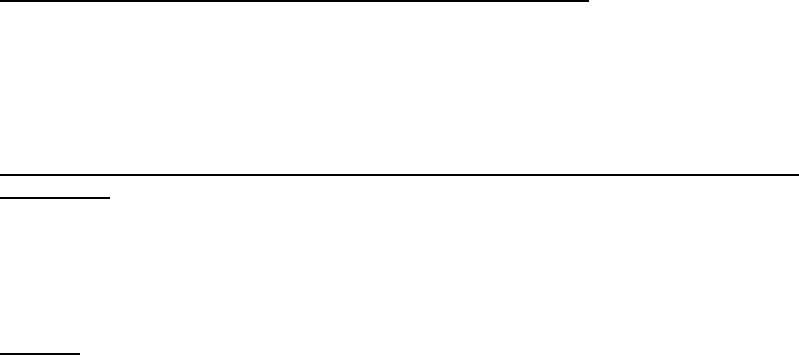System information
Table Of Contents
- Table of Contents
- 1 Introduction to the SmartServer SOAP/XML Interface
- 2 SOAP Messages and the SmartServer WSDL File
- 2.1 SmartServer Naming Structure
- 2.2 SmartServer WSDL File
- 2.3 Security
- 2.4 SOAP Request and Response Message Structure
- 2.5 SOAP Messages Formats
- 2.6 Data Point References
- 2.7 UCPTcurrentConfig
- 2.8 Fault Structure
- 2.9 LonString type
- 2.10 SOAP Message Examples
- 3 SmartServer Applications and the SOAP/XML Interface
- 3.1 Overview of SmartServer Applications
- 3.2 SmartServer XML Configuration Files
- 3.3 SmartServer Resource Files
- 3.3.1 Standard Network Variable Type (SNVT) Device Resource Files
- 3.3.2 Standard Configuration Property Type (SCPT) Device Resource Files
- 3.3.3 User Defined Network Variable Type (UNVT) Device Resource Files
- 3.3.4 User Defined Configuration Property Type (UCPT) Device Resource Files
- 3.3.5 Data Point Templates
- 3.3.6 Data Formatting
- 3.4 SOAP Functions
- 3.5 Performance Issues
- 4 Using the SmartServer Data Server
- 4.1 Creating and Modifying the Data Point XML Files
- 4.2 Overview of the Data Point XML File
- 4.3 Data Server SOAP Interface
- 4.3.1 Using the List Function on the Data Server
- 4.3.2 Using the Get Function on the Data Server
- 4.3.3 Using the Set Function on the Data Server
- 4.3.4 Using the Read Function on the Data Server
- 4.3.5 Using the Write Function on the Data Server
- 4.3.6 Using the Invoke Function to Reset Data Point Priorities
- 4.3.7 Data Point Values and Priority Levels
- 4.3.8 Using the Delete Function on the Data Server
- 4.4 Using the Web Binder Application
- 5 Data Loggers
- 5.1 Overview of the Data Logger XML File
- 5.2 Creating and Modifying the Data Logger XML File
- 5.3 Data Logger SOAP Interface
- 6 Alarm Generator
- 6.1 Overview of the Alarm Generator XML File
- 6.2 Creating and Modifying the Alarm Generator XML File
- 6.3 Alarm Generator SOAP Interface
- 7 Alarm Notifier
- 7.1 Overview of the AlarmNotifier XML File
- 7.2 Creating and Modifying the Alarm Notifier XML File
- 7.3 Alarm Notifier SOAP Interface
- 7.3.1 Using the List Function on an Alarm Notifier
- 7.3.2 Using the Get Function on an Alarm Notifier
- 7.3.3 Using the Set Function on an Alarm Notifier
- 7.3.4 Using the Read Function on an Alarm Notifier
- 7.3.5 Using the Write Function on an Alarm Notifier Log File
- 7.3.6 Using the Clear Function on an Alarm Notifier Log File
- 7.3.7 Using the Delete Function on an Alarm Notifier
- 8 Analog Function Block
- 9 Scheduler
- 9.1 Overview of the Scheduler XML File
- 9.2 Creating and Modifying the Scheduler XML File
- 9.3 Scheduler SOAP Interface
- 10 Calendar
- 10.1 Overview of the Calendar XML File
- 10.2 Creating and Modifying the Calendar XML File
- 10.3 Calendar SOAP Interface
- 11 Real Time Clock
- 12 Type Translator
- 12.1 Overview of the Type Translator XML File
- 12.2 Creating and Modifying the Type Translator XML File
- 12.3 Type Translator SOAP Interface
- 12.3.1 Using the List Function on a Type Translator
- 12.3.2 Using the Get Function on a Type Translator
- 12.3.3 Using the Set Function on a Type Translator
- 12.3.4 Pre Defined Type Translator Rules
- 12.3.4.1 16xSNVT_switch_TO_SNVT_state
- 12.3.4.2 SNVT_lev_disc_TO_SNVT_occupancy
- 12.3.4.3 SNVT_lev_disc_TO_SNVT_switch
- 12.3.4.4 SNVT_occupancy_TO_SNVT_setting
- 12.3.4.5 SNVT_scene_TO_SNVT_setting
- 12.3.4.6 SNVT_scene_TO_SNVT_switch
- 12.3.4.7 SNVT_setting_TO_SNVT_switch
- 12.3.4.8 SNVT_state_TO_16xSNVT_switch
- 12.3.4.9 SNVT_switch_TO_SNVT_lev_disc
- 13 Type Translator Rules
- 14 LonWorks Driver
- 14.1 LonWorks Networks
- 14.2 LonWorks Channels
- 14.3 LonWorks Devices
- 14.4 Routers
- 14.5 Remote Network Interface
- 14.6 LonWorks Functional Blocks
- 14.7 Network Variables (LonWorks Data Points)
- 14.8 Configuration Properties (LonWorks Data Points)
- 14.9 LonWorks Connections
- 15 Modbus Driver
- 16 M Bus Driver
- 17 Virtual Driver
- 18 File System Data
- 19 System Information Methods
- 20 Using the SOAP Interface as a Web Service
- 21 Programming Examples
- 21.1 Visual C#.NET Examples
- 21.1.1 Reading and Writing Data Point Values in Visual C# .NET
- 21.1.2 Creating and Reading a Data Logger in Visual C# .NET
- 21.1.3 Creating a Scheduler and Calendar in Visual C# .NET
- 21.1.4 Creating and Installing a LonWorks Device in Visual C# .NET
- 21.1.5 Commissioning External Devices in Visual C# .NET
- 21.1.6 Discovering and Installing External Devices in Visual C# .NET
- 21.1.7 Configuring the SmartServer in Visual C# .NET
- 21.2 Visual Basic.NET Examples
- 21.2.1 Reading and Writing Data Point Values in Visual Basic.NET
- 21.2.2 Creating and Reading a Data Logger in Visual Basic. NET
- 21.2.3 Creating a Scheduler and Calendar in Visual Basic.NET
- 21.2.4 Creating and Installing a LonWorks Device in Visual Basic.NET
- 21.2.5 Commissioning External Devices in Visual Basic.NET
- 21.2.6 Discovering and Installing External Devices in Visual Basic.NET
- 21.2.7 Configuring the SmartServer in Visual Basic.NET
- 21.1 Visual C#.NET Examples
- 22 Programming the SmartServer with Java
- Appendix A: SOAP Tester Example

i.LON SmartServer 2.0 Programmer’s Reference
14-20
<xSelect>
//Item[@xsi:type="LON_Device_Cfg"] [UCPTitemStatus="IS_UNCONFIGURED”]
</xSelect>
</iLonItem>
</Get>
Request (use an xSelect statement return any devices that are offline)
<Get xmlns="http://wsdl.echelon.com/web_services_ns/ilon100/v4.0/message/">
<iLonItem>
<xSelect>
//Item[@xsi:type="LON_Device_Cfg"] [UCPTitemStatus="IS_APP_STOPPED”]
</xSelect>
</iLonItem>
</Get>
Request (use an xSelect statement to return all devices from a specific manufacturer using the
program ID)
<Get xmlns="http://wsdl.echelon.com/web_services_ns/ilon100/v4.0/message/">
<iLonItem>
<xSelect>
//Item[@xsi:type="LON_Device_Cfg"] [UCPTprogramId="80000105288a0403"] </xSelect>
</iLonItem>
</Get>
Response
<Get xmlns="http://wsdl.echelon.com/web_services_ns/ilon100/v4.0/message/">
<iLonItem>
<Item xsi:type="LON_Device_Cfg">
<UCPTname>Net/LON/DIO-1</UCPTname>
<UCPTannotation>App;xsi:type="LON_Device_Cfg"</UCPTannotation>
<UCPThidden>0</UCPThidden>
<UCPTlastUpdate>2008-03-26T17:09:46.160-07:00</UCPTlastUpdate>
<UCPTuri>LON_Device_Cfg.htm</UCPTuri>
<UCPThandle>5</UCPThandle>
<UCPTuniqueId>00a145791500</UCPTuniqueId>
<UCPTprogramId>80000105288a0403</UCPTprogramId>
<UCPTgeoPosition>1</UCPTgeoPosition>
<UCPTlocationId>000000000000</UCPTlocationId>
<UCPTmaxDynamicFb>0</UCPTmaxDynamicFb>
<UCPTmaxDynamicDp>0</UCPTmaxDynamicDp>
<UCPTmaxTxTransactions>0</UCPTmaxTxTransactions>
<UCPTmaxTxLifetime>0</UCPTmaxTxLifetime>
<UCPTlocal>0</UCPTlocal>
<UCPTapplicationStatus LonFormat="UCPTapplicationStatus">APP_RUNNING</UCPTapplicationStatus>
<UCPTcommissionStatus LonFormat="UCPTcommissionStatus">COMMISSIONED</UCPTcommissionStatus>
<UCPTurlImage />
<UCPTurlTemplate>/root/lonWorks/Import/Echelon/LonPoint/Version3/dio-10v3.xif</UCPTurlTemplat
e>
<UCPTdynamic LonFormat="UCPTdynamic">DDT_DYNAMIC</UCPTdynamic>
<Address>
<UCPTdomainIndex>0</UCPTdomainIndex>
<UCPTdomainLength>6</UCPTdomainLength>
<UCPTdomainKey>7DEF1857C766</UCPTdomainKey>
<UCPTsubnet>1</UCPTsubnet>
<UCPTnodeId>5</UCPTnodeId>
</Address>
<Address>
<UCPTdomainIndex>1</UCPTdomainIndex>
<UCPTdomainLength>0</UCPTdomainLength>
<UCPTdomainKey />
<UCPTsubnet>0</UCPTsubnet>
<UCPTnodeId>0</UCPTnodeId>
</Address>
<Command>
<UCPTcommand>Wink</UCPTcommand>
<UCPTlastUpdate>2008-03-26T17:09:46.160-07:00</UCPTlastUpdate>
<UCPTstatus LonFormat="UCPTstatus">STATUS_DONE</UCPTstatus>
</Command>
</Item>










